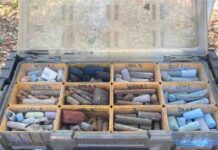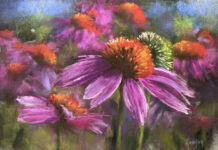Tomorrow is Thanksgiving in the United States so in keeping with that celebration, I’d like to share this smile-making painting by Eastman Johnson in the Metropolitan Museum of Art titled Feeding the Turkey.
I came across this painting while collecting images for a Looking at Art session in my IGNITE! Art-making membership and was totally charmed by it! I love that this isn’t perhaps what you might expect from the painting’s title, Feeding the Turkey. In fact, this looks quite the opposite lol!
I also appreciate the connections you can make between the two figures.
Let’s have a look at the painting as a whole.
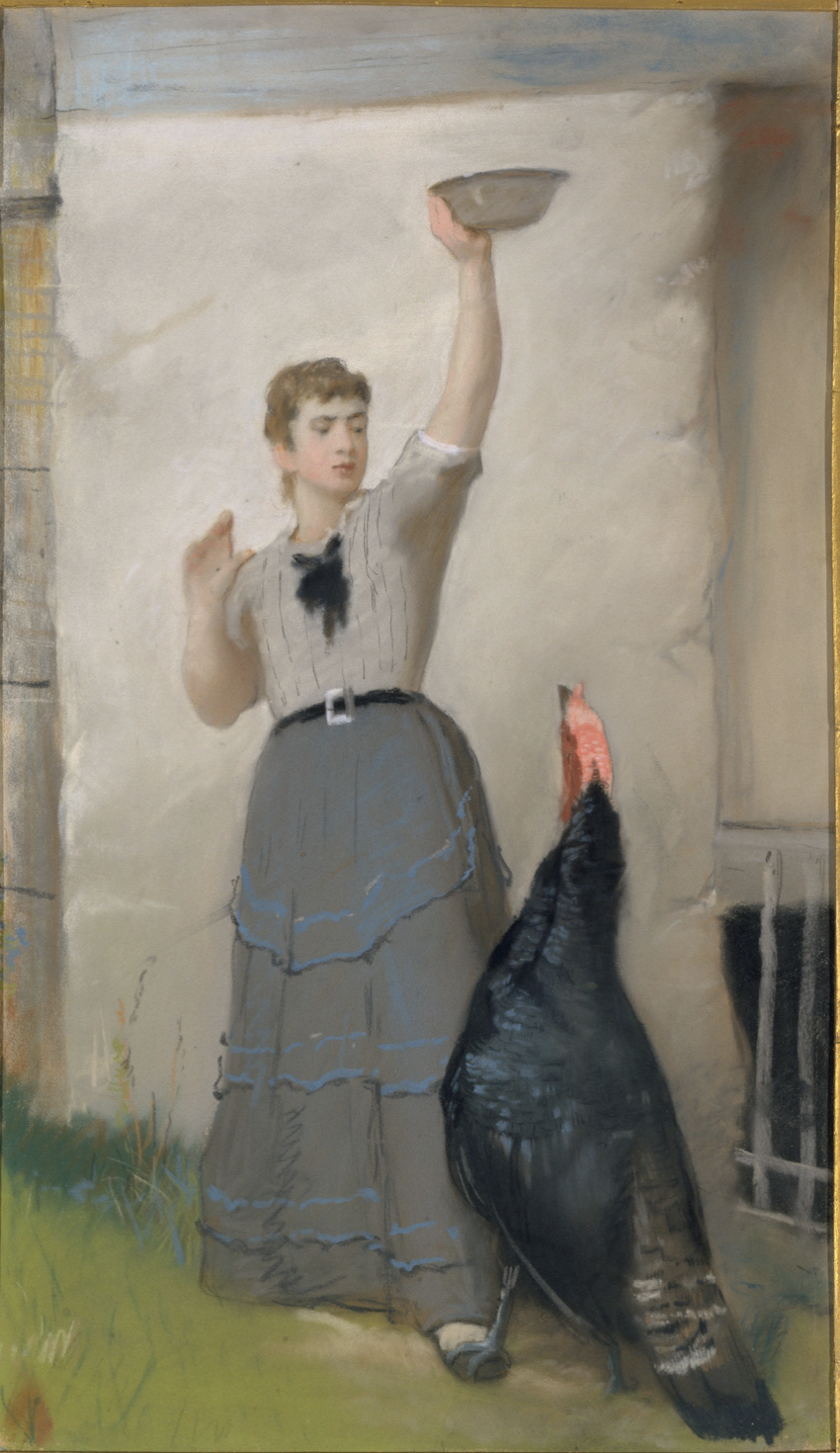
Now let’s have a closer look!
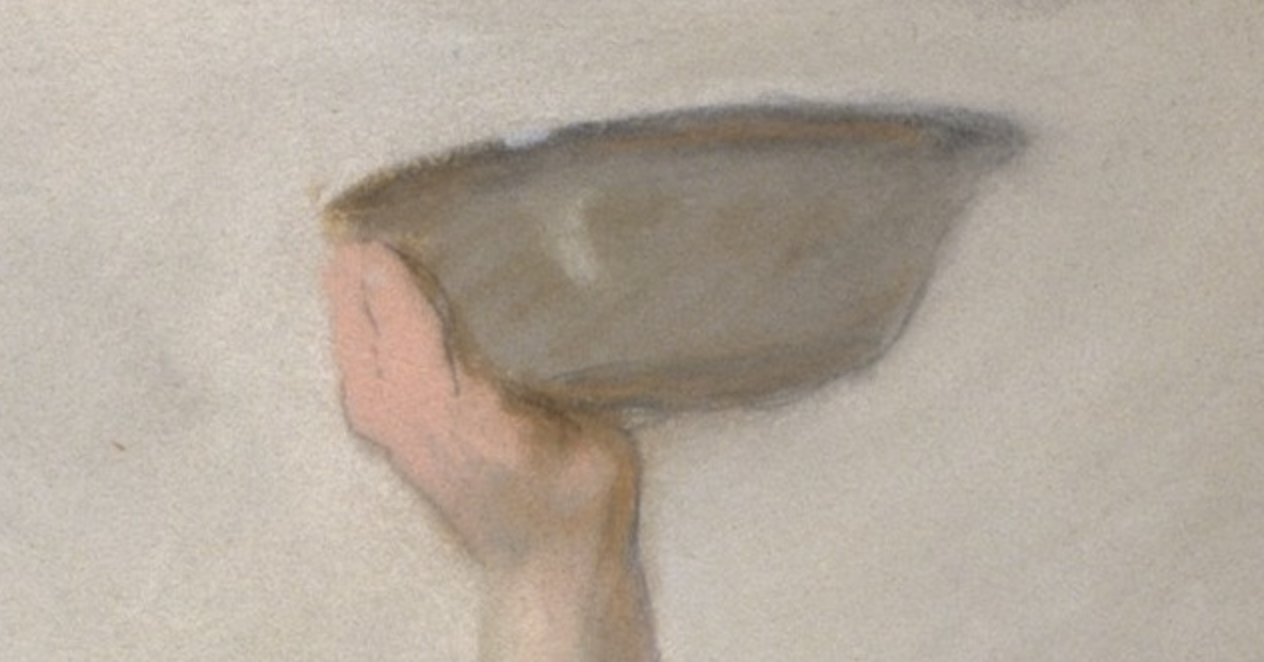
The bowl held high in the woman’s hand – both simplified and perfectly drawn! And look how her hand echos the shape and colouring of the turkey’s head.
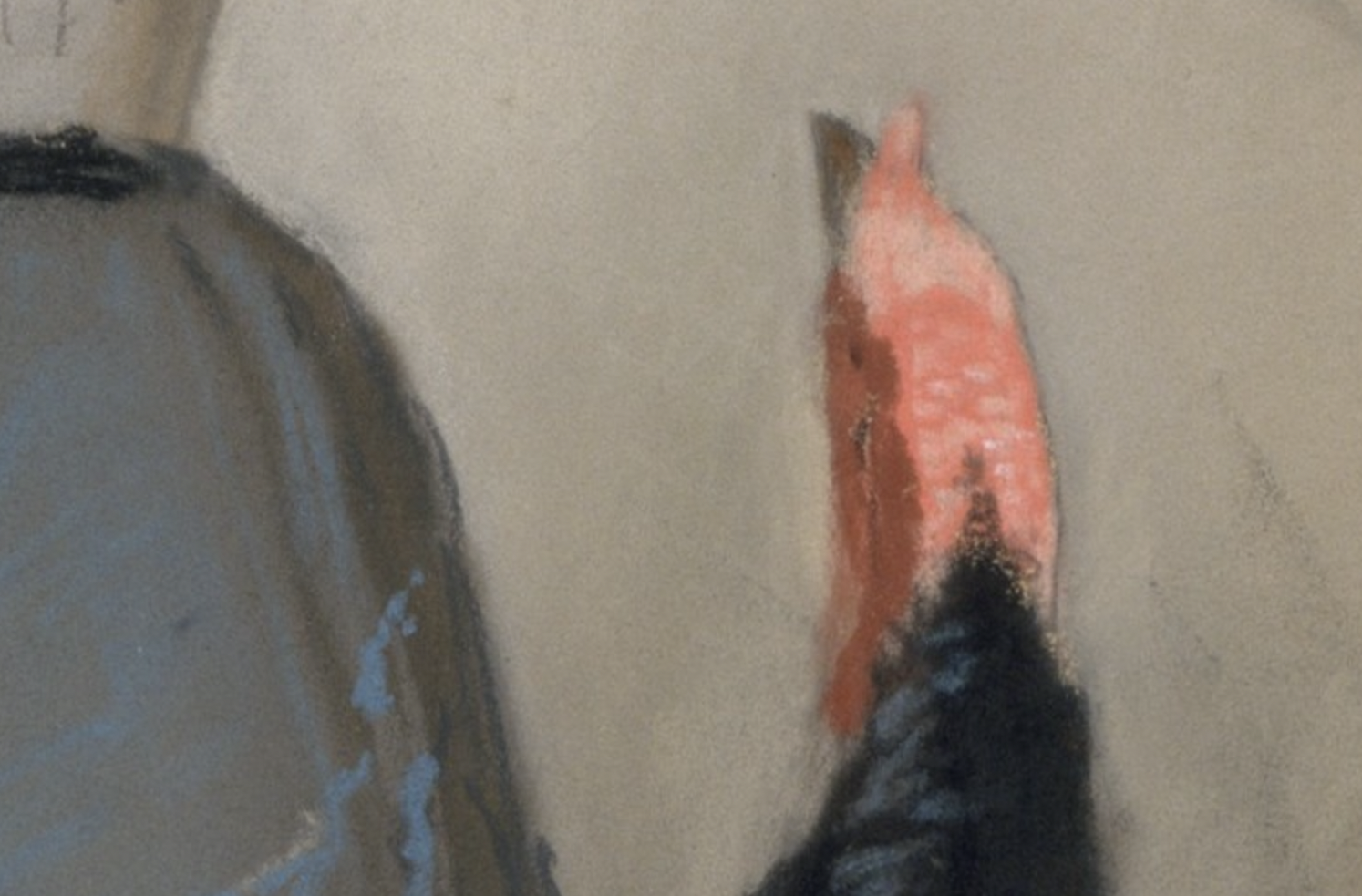
Again, you can see that Johnson understands anatomy and, in perspective, captures the upturned, yearning (demanding?!) head of the turkey, stretching upward to the bowl.
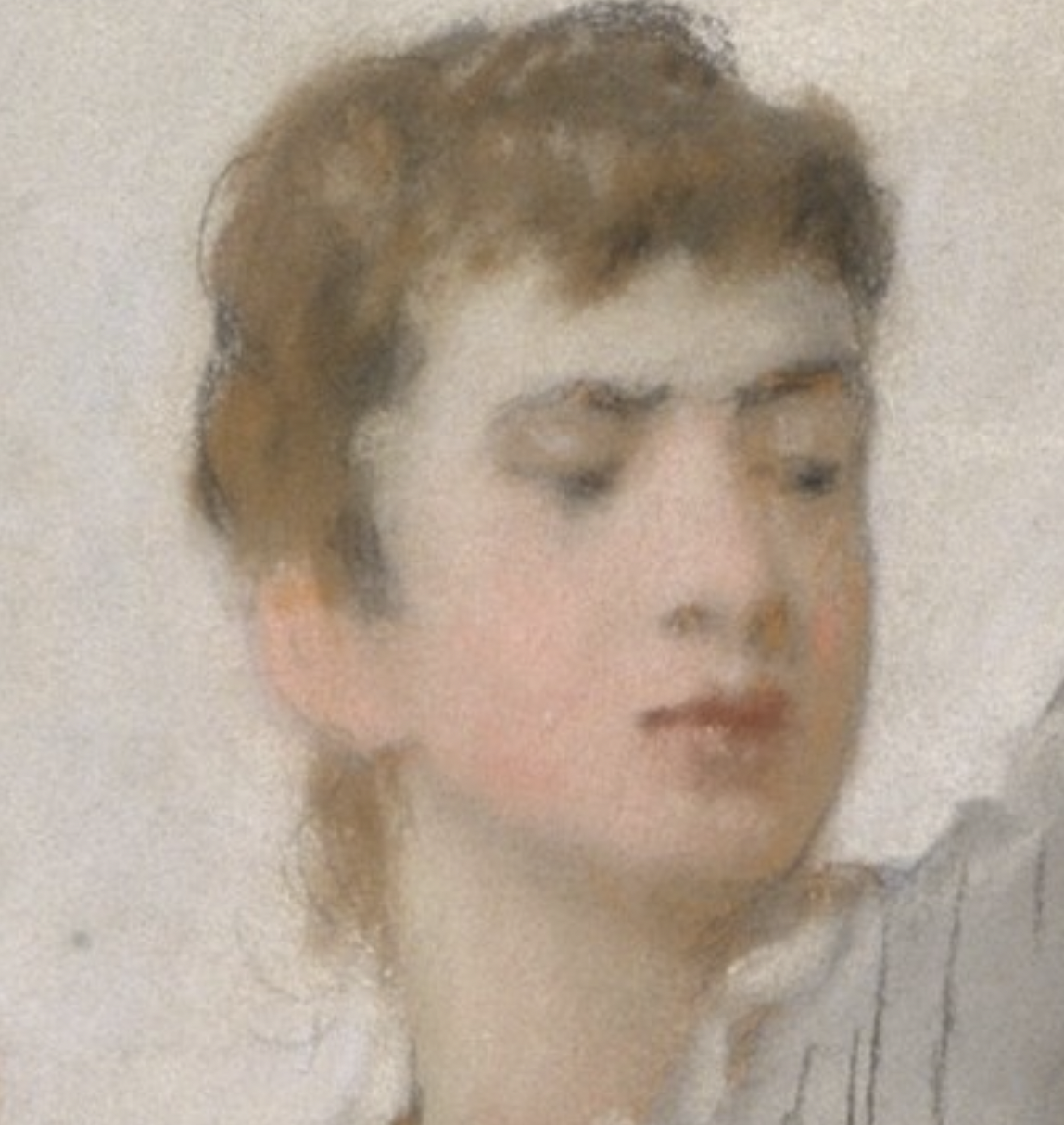
And how do you read the expression on the woman’s face? The wrinkled eyebrow, the downward glower, the slightly pursed lips – they tell us a lot about what she’s thinking!
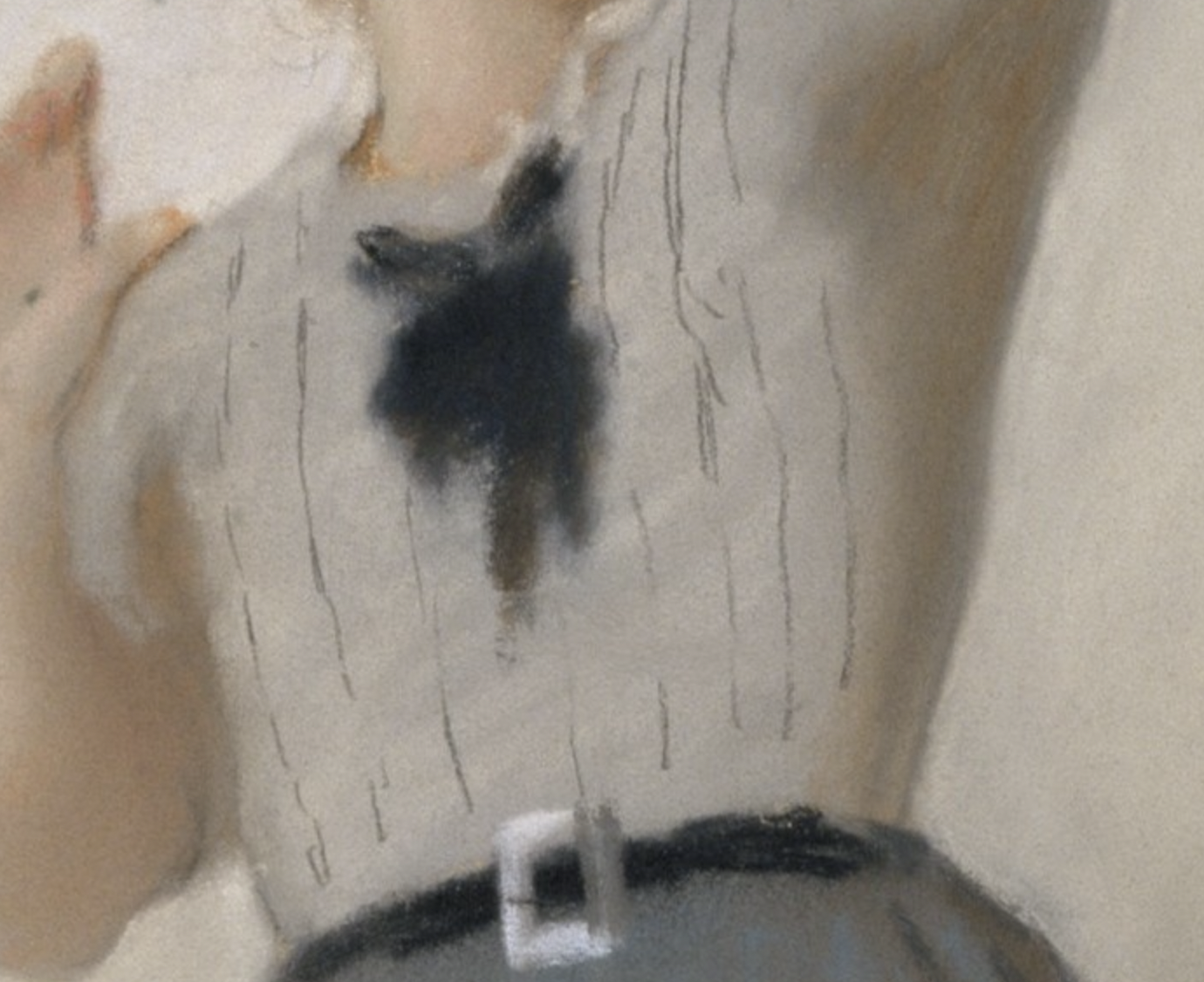
The artist adds just enough pastel marks to express objects such as the ribbon tying her collar or the vertical striping on her blouse. You can see Johnson wasn’t worried about creating double lines; he just left them as is.
Look at the way the skin colouring flows right into the clothing near both armpits. This reminds us that there is flesh and bone beneath the material.
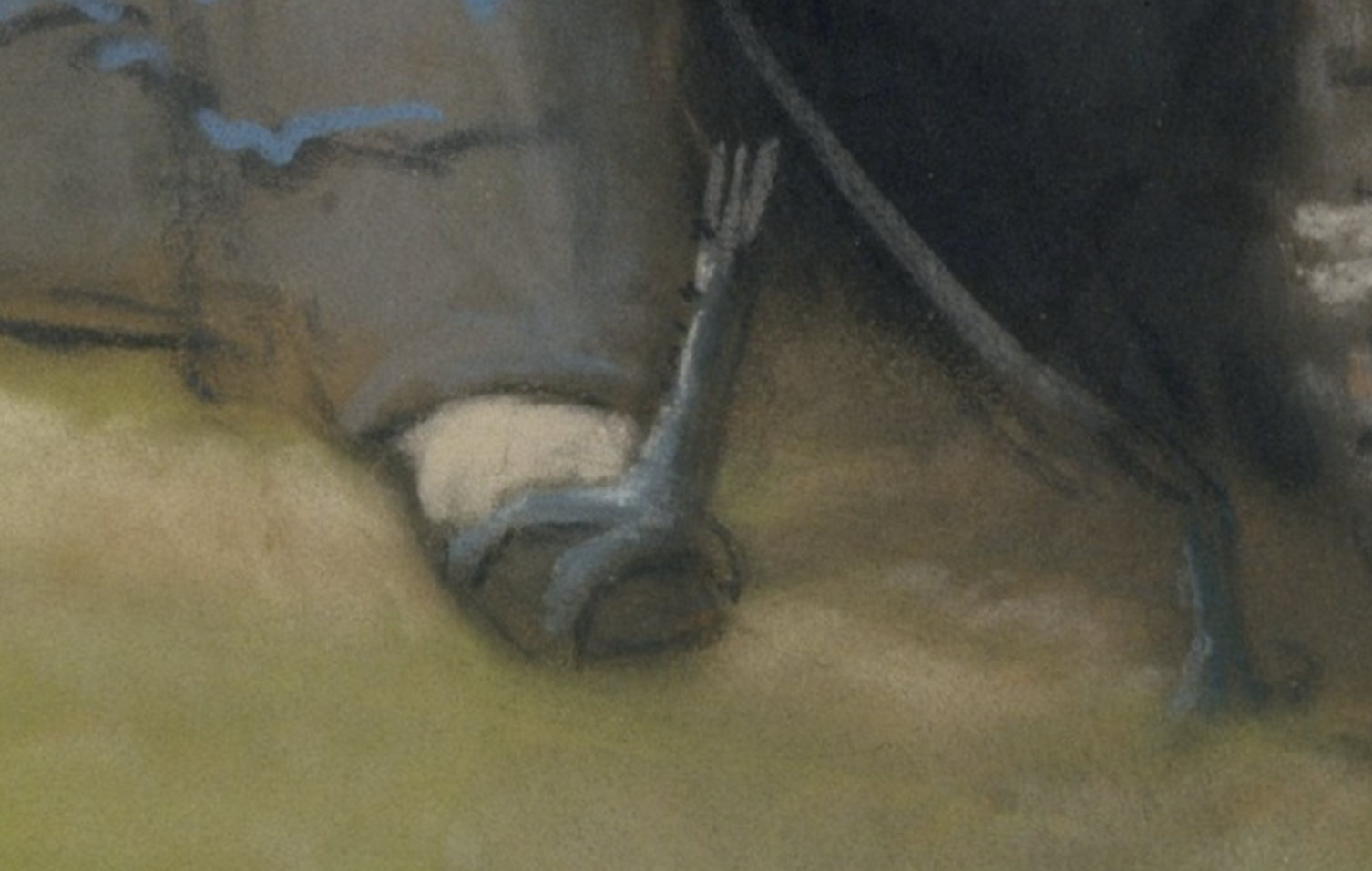
Okay, I think this is my favourite part of this engaging painting – the turkey’s foot wrapped around hers! That turkey is leveraging the foot to gain height. And bound and determined to get that food. He (?) is not letting the woman go before being fed! This is a small delightful detail that a cursory glance at the picture might miss.
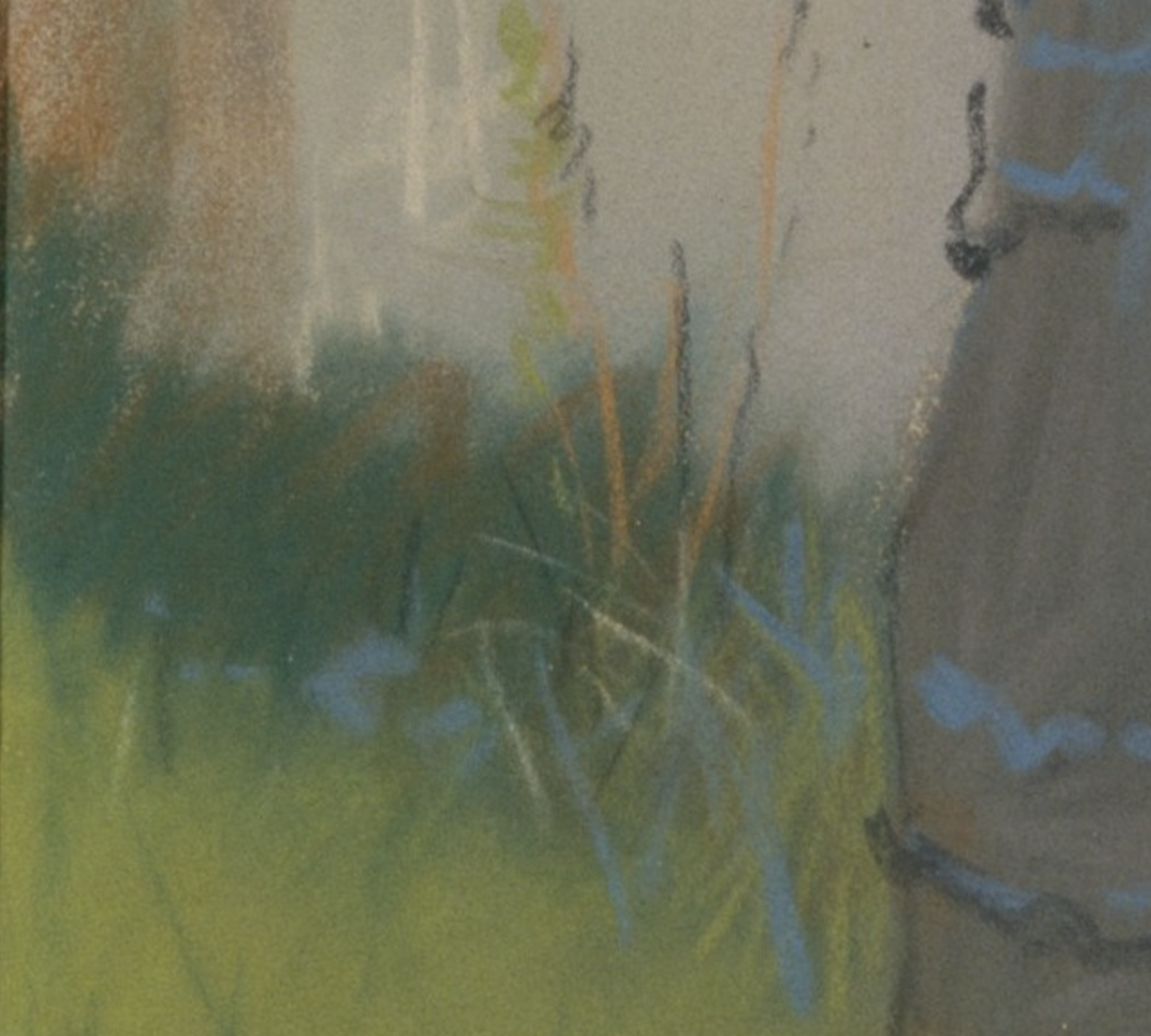
Minimal marks to express grass in greens, blues, and oranges. It’s all that’s needed.
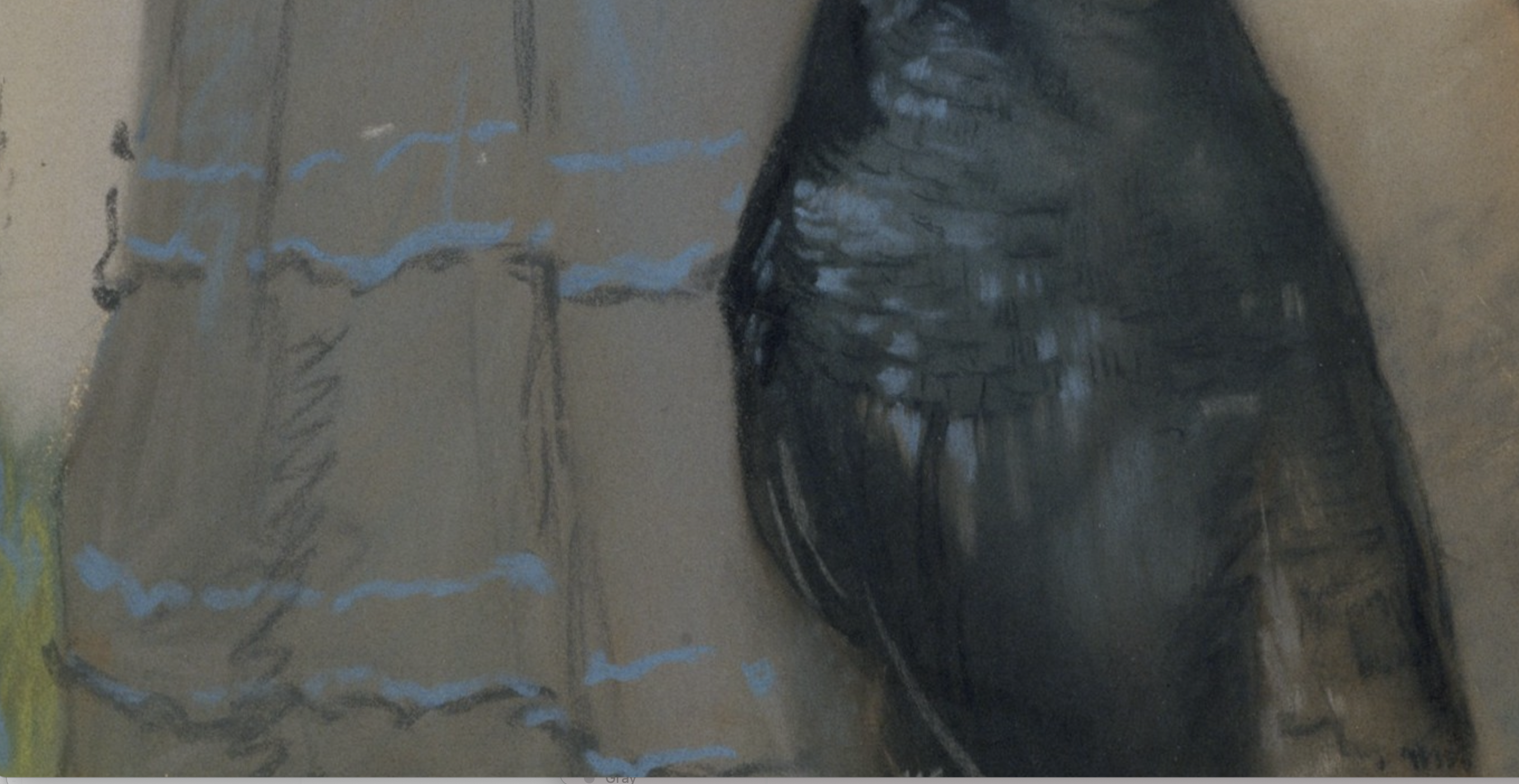
I mentioned earlier that I appreciated the way the woman and the turkey were visually connected in this piece. Look at the way the stripes run from the woman’s dress over and into the turkey. And what about the use of that blue to signify both flourishes on the dress and reflective feathers on the bird?
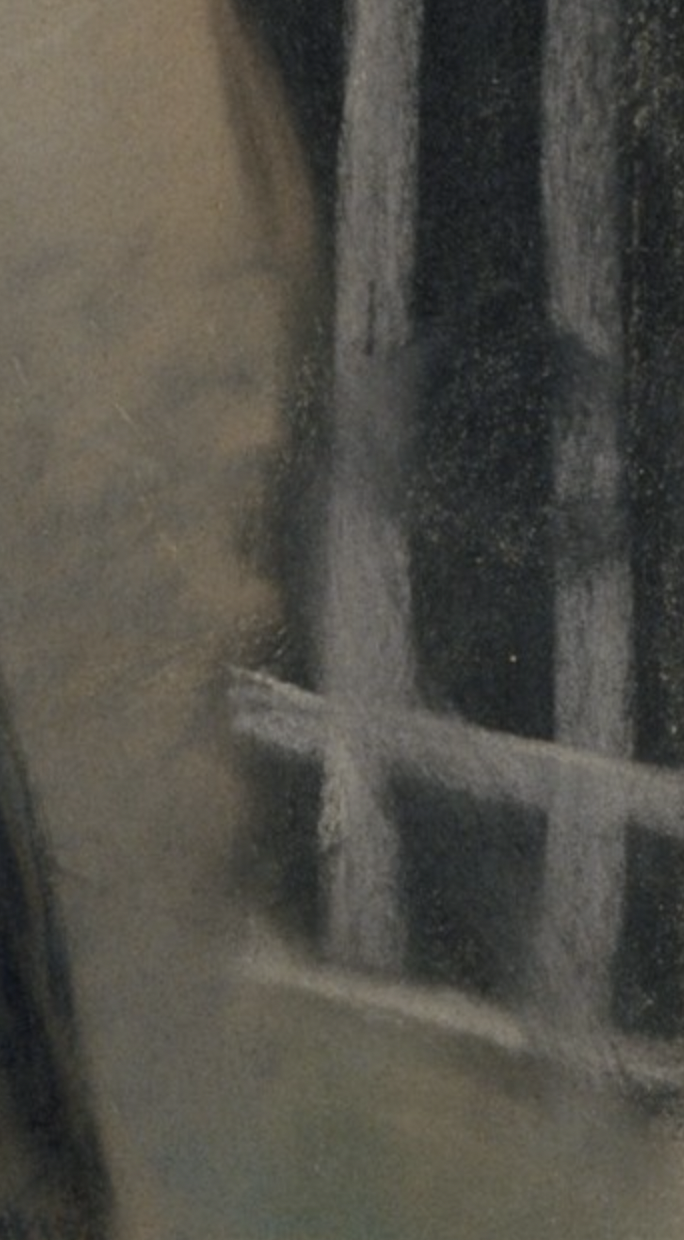

And just one more thing to point out – the dark and barred right lower corner associated with the turkey and the light upper left backing the woman. What can you take from that?
Now go have another look at the whole painting!
This is what the MET’s website has to say about Feeding the Turkey:
“Although his oeuvre in pastel crayon includes no more than twenty pieces, it is nonetheless highly significant, not only because Johnson’s handling of the material was so skillful but also because he was one of the few American artists who used it during the mid-nineteenth century. Johnson began using pastel in 1847—making him practically unique among his colleagues—and may have come to regard pastel, which shared basic properties with the other drawing media he used so comfortably, as a reasonable way to add color to his work. This particular work is part of a series leading up to an oil painting of the same title. He probably used his daughter Ethel as his model.”
It’s quite amazing isn’t it, about Johnson’s early use of pastels. Too bad that he did so few.
You can read more about Eastman Johnson and also see his art here.
_______________________________________________________________________
Do you keep a Gratitude Journal?
I know this isn’t directly art related but it is life-related and that feeds into our art doesn’t it?
I find taking a little bit of time at the end of the day to jot down all the things I’m grateful for that day, large and small, gives me moments to reflect on the things that matter.
And apparently practising gratitude (which includes keeping a gratitude journal) has many benefits.
So, in this time of thanks, and as we approach the season of giving, you may want to treat yourself or someone to a gratitude journal.

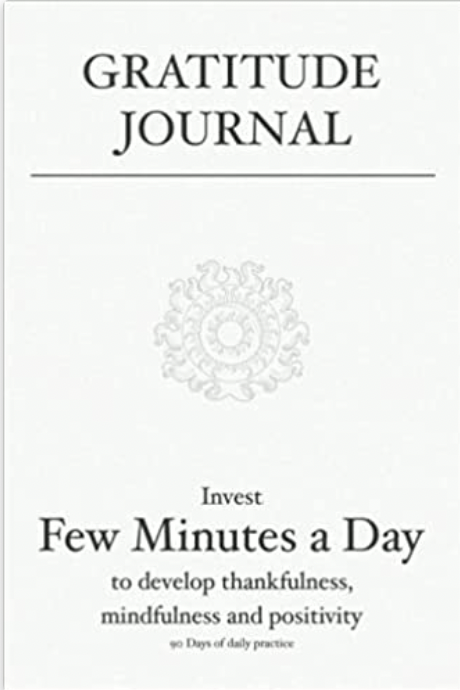
Happy Thanksgiving!
And that’s it for this time,
Gail

